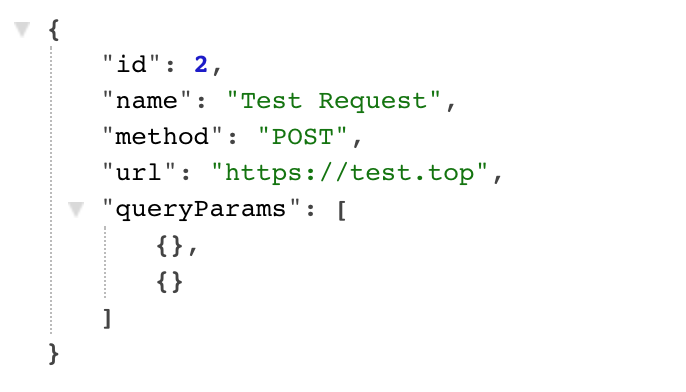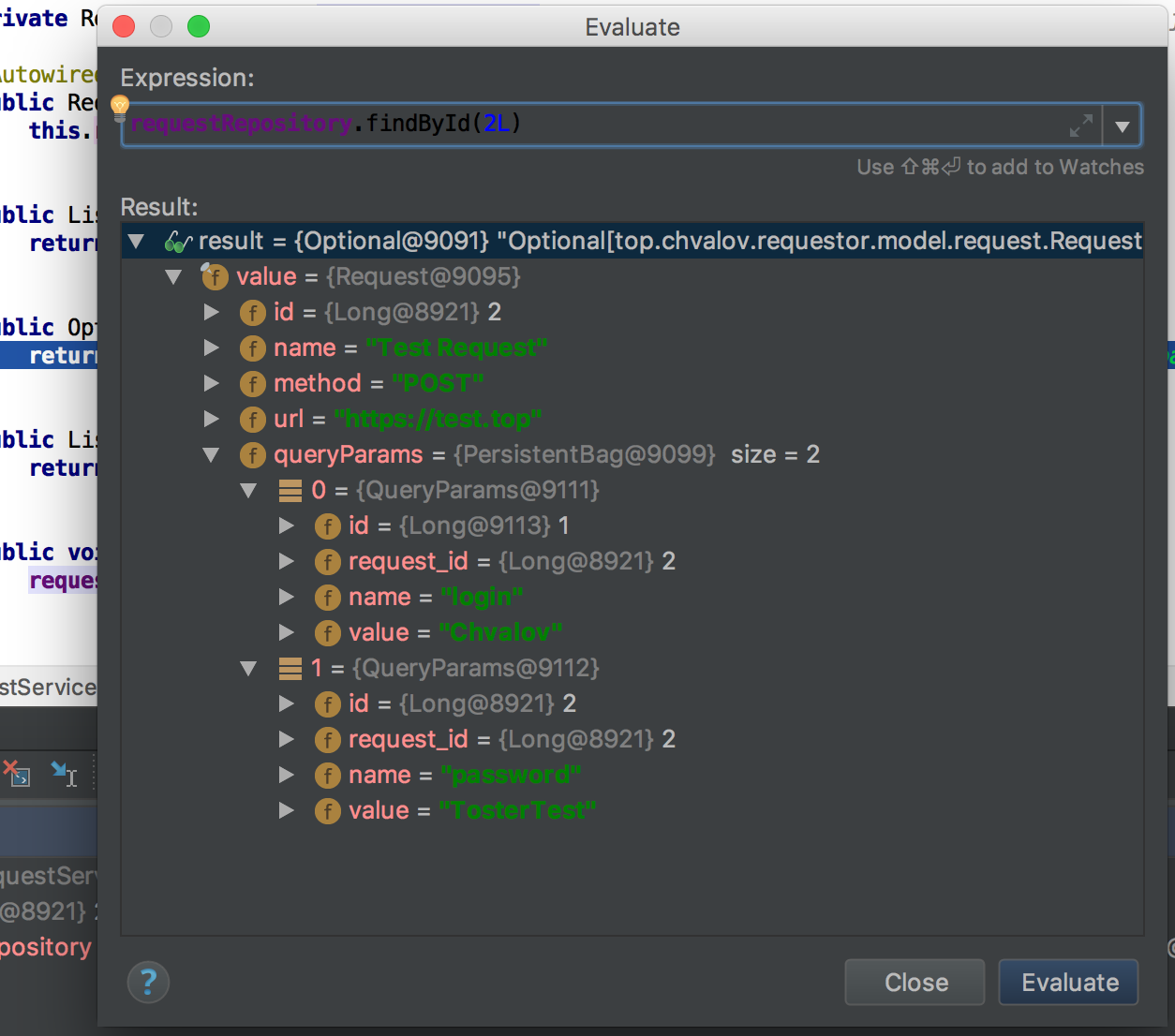Answer the question
In order to leave comments, you need to log in
How to output nested OneToMany data?
There is an Entity class:
@Id
@GeneratedValue(strategy = GenerationType.AUTO)
private Long id;
private String name;
private String method;
private String url;
@OneToMany
private List<QueryParams> queryParams;
@GetMapping("/find/{name}")
public List<Test> find(@PathVariable String name) {
return testService.findByName(name);
}
@GetMapping("get/{id}")
public Optional<Test> gets(@PathVariable("id") Long id) {
return testService.findById(id);
}
Answer the question
In order to leave comments, you need to log in
Hello.
For a complete understanding, there is not enough code for your service class and dao class (if any). In my opinion, the problem is in the strategy of loading related objects (@OneToMany).
In Hibernate/JPA, there are two types of strategy for loading related objects: immediately (FetchType=EAGER) or do it only when they are accessed (FetchType=LAZY). In fact, in the case when the subject area has any complicated structure of relations between objects, the choice has already been made - to load half the database for the sake of one object, as it would be with FetchType=EAGER, to put it mildly, unreasonable. Therefore, lazy initialization in the case of collections is the most preferred strategy for initializing related objects [ https://habr.com/post/111911/].The default for a OneToMany relationship is FetchType=LAZY.
So the problem is with loading related objects from the database.
In the code of your model, you need to add an annotation with a choice of the type of loading strategy:
...
@OneToMany(fetch = FetchType.LAZY)
private List<QueryParams> queryParams;
......
return testObject;
...Didn't find what you were looking for?
Ask your questionAsk a Question
731 491 924 answers to any question